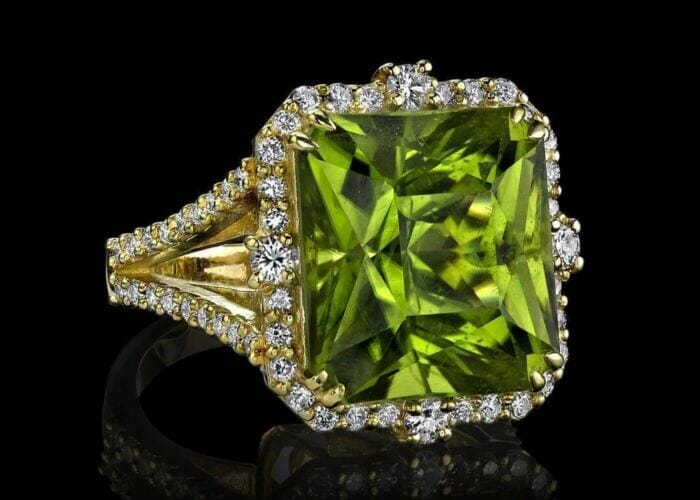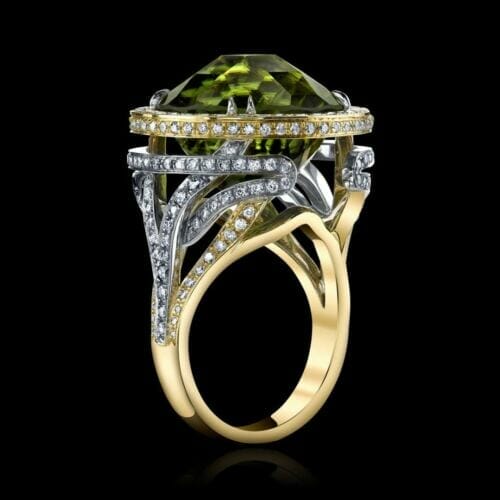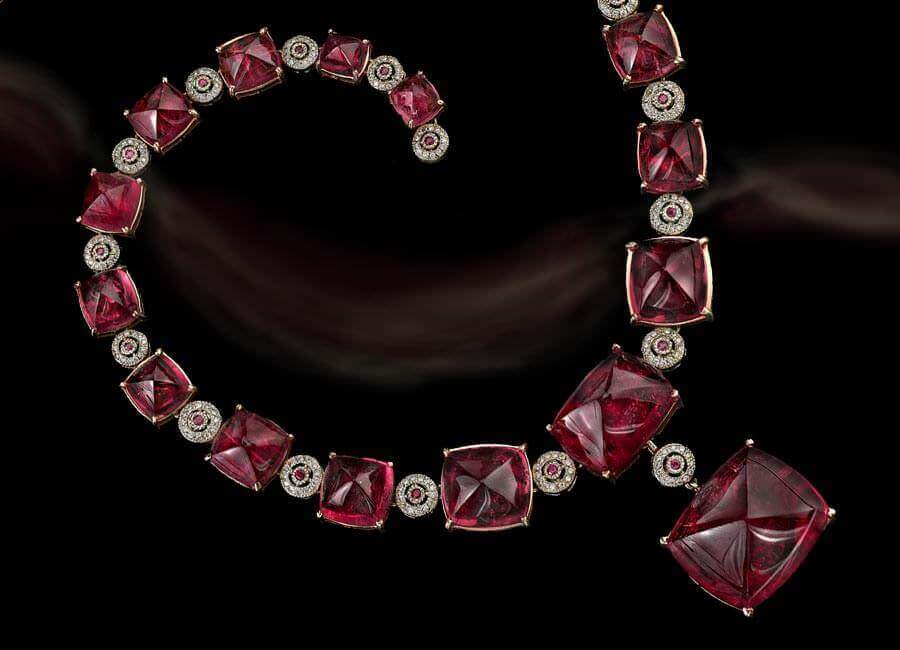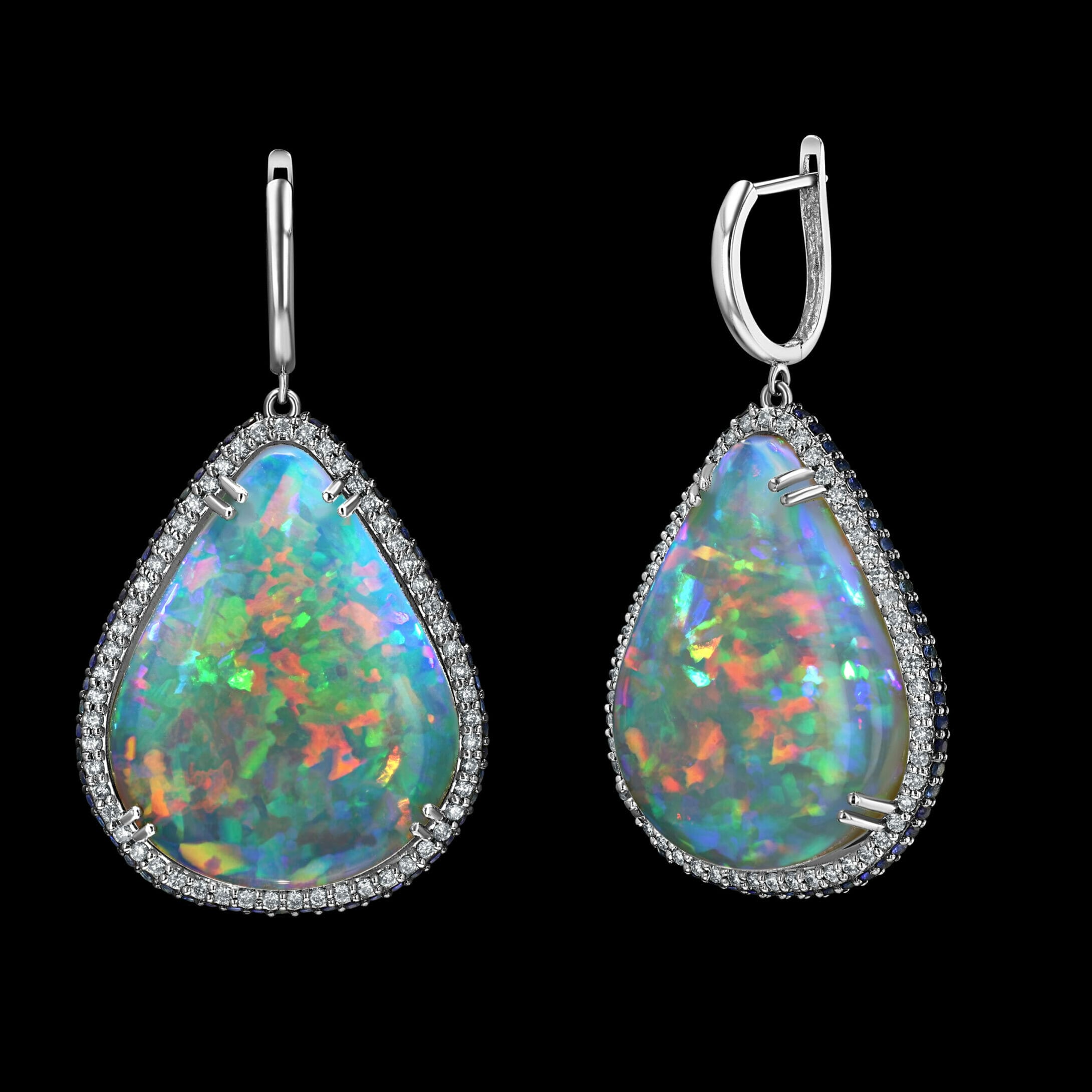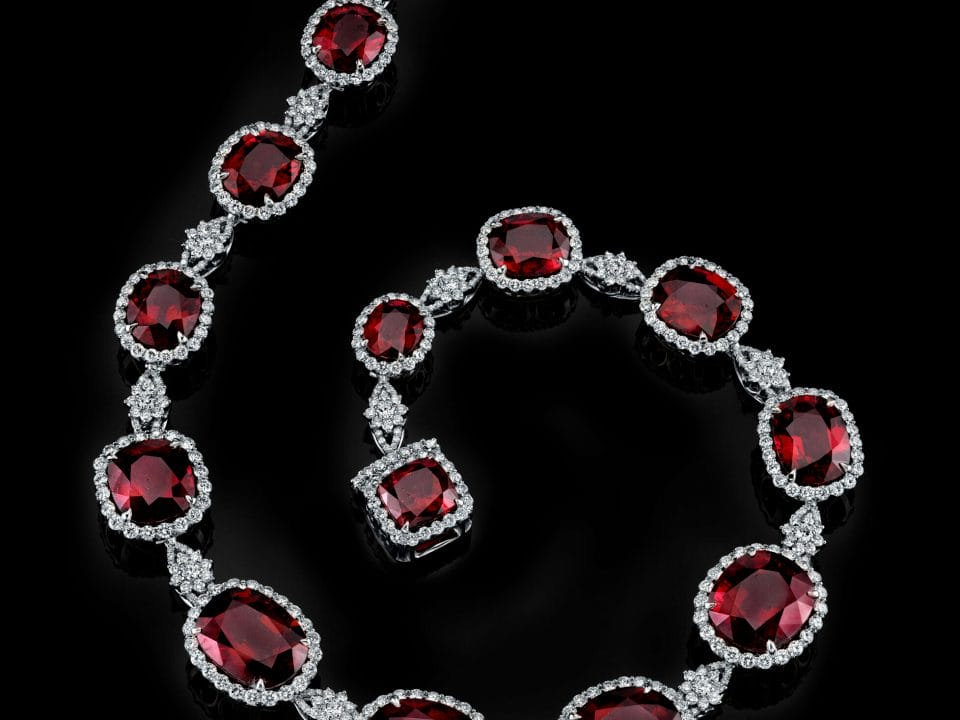Peridots have been prized as jewelry stones since ancient times. Always green in color but with considerable variations, their particular shades depend on their locality of origin.
Peridots belong to the forsterite-fayalite solid-solution series, which forms part of the olivine group of minerals. The term peridot refers to green, gem-quality olivine. Forsterite is the magnesium (Mg) dominant end, while fayalite is the iron (Fe) dominant end. As idiochromatic gems, peridots get their characteristic green color from iron, an essential element of their chemical structure. In peridot, ferrous iron (Fe2+) creates green, while ferric iron (Fe3+) creates yellow. While traces of chromium (Cr) in peridots don’t cause hue, they may make the green color brighter.
An iron content of just 12 to 15% in olivines creates the ideal peridot color. Higher levels create a “muddier” brown color. Thus, olivines closer in composition to the forsterite end tend to be greener. In contrast, those closer to iron-dominant fayalite tend to be yellower and browner. Therefore, most peridots are closer to the forsterite end.
Cat’s eye and star stone peridots are known but very rare. In cabbed gems, inclusions can create a star with a weak cross or a distinct 4-ray effect.
The modern August birthstone has a long history. The celebrated Isle of St. John, or Zabargad, Egypt, in the Red Sea, has produced peridots since the time of Ancient Egypt. This site has also produced one of the most confusing name mixups in gemology. The Ancient Greeks called this island Topazios, which was said to produce a yellow-green gem. This name for the island eventually led to the name topaz for those famously (but not exclusively) yellow gems. Oddly enough, the gem modern gemology identifies as topaz does not occur on this island. However, gems from this island were also called chrysolite, Greek for “golden stone.” By the 19th century, chrysoberyl, prehnite, and peridot (all green to yellow-green gems) were called chrysolite.
You might still encounter the term chrysolite used synonymously with peridots or sometimes in reference to intermediate members of the olivine forsterite-fayalite series. Nevertheless, gemologists today no longer use this term. Topaz, chrysoberyl, prehnite, and peridot (olivine) are all distinct gem species.
From the International Gem Society.


